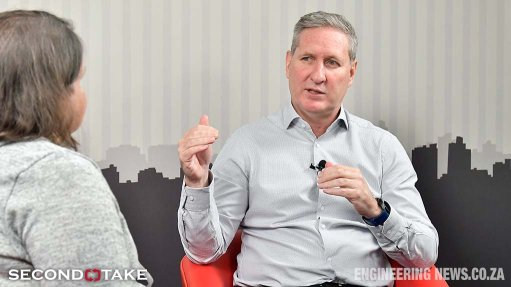IATA calls for more research into aircraft contrail formation and effects
The International Air Transport Association (IATA), which is the global representative body for the airline industry, has called for urgent action to deepen knowledge about the formation and climate impact of contrails formed by aircraft. Such knowledge is essential to allow the development of effective mitigation measures. Contrails are the long, thin, cloud-like streaks that trail behind aircraft flying at altitude, and are formed when water vapour in jet engine exhausts condenses and freezes in the very cold air to form tiny ice crystals. These ice crystals reflect sunlight.
Contrails are an example of non-carbon-emission climate impacts by aviation (another was nitrous oxide emissions). In ice supersaturated regions of the atmosphere, contrails can persist, and turn into cirrus clouds, which reflect incoming solar radiation during the day and trap outgoing heat. It is understood that, on balance, contrails warm the climate, varying according to the time of day, time of year and geographic location. But there are still significant uncertainties regarding the prediction of the formation of individual contrails, and the specific climate impact of contrails.
“The industry and its stakeholders are working to address the impact of non-CO2 emissions on climate change, particularly contrails,” highlighted IATA director-general Willie Walsh. “To ensure that this effort is effective and without adverse effects, we must better understand how and where contrails form and shrink the uncertainties related to their climate impact. ‘Action now’ means more trials, collection of more data, improvement of climate models, and maturing technologies and operations. Formulating and implementing regulations based on insufficient data and limited scientific understanding is foolish and could lead to adverse effects on the climate.”
IATA has just released a report on the issue: 'Aviation Contrails and their Climate Effect: Tackling Uncertainties and Enabling Solutions'. This was developed with the collaboration of 14 other agencies and companies. These were the Aerospace Technology Institute, Airbus, Airlines for America, the Air Transport Action Group, Boeing, FAAM Airborne Laboratory, Forschungszentrum Jülich, the German Meteorological Service, the German Aerospace Centre, In-service Aircraft for a Global Observing System, the National Centre for Atmospheric Science, the Royal Aeronautical Society, the University of Leeds, and the World Meteorological Organisation.
The report recommends a series of actions, dividing them into immediate-term, mid-term and longer-term categories.
The immediate term covered the period 2024 to 2030. During this time, the focus should be on reducing aviation’s CO2 emissions, while increasing scientific research into contrails, including fitting more airliners from more airlines with the sensors needed to detect and monitor contrail formation, thereby greatly increasing the quantity of data available for research and modelling.
“Mid-term actions (2030 to 2040) should involve establishing standards for data transmission, continuous validation of models, and encouraging aircraft manufacturers to include provisions for meteorological observations, as well as selected avoidance,” stated IATA.
The longer term covered the period 2040 to 2050. By that time, aircraft should be providing contrail data continuously, and contrail models should exist and be reliable (as should the concomitant infrastructure). The aviation community should have a more thorough comprehension of the non-CO2 effects of alternative aviation fuels, and extended mitigation measures.
Comments
Press Office
Announcements
What's On
Subscribe to improve your user experience...
Option 1 (equivalent of R125 a month):
Receive a weekly copy of Creamer Media's Engineering News & Mining Weekly magazine
(print copy for those in South Africa and e-magazine for those outside of South Africa)
Receive daily email newsletters
Access to full search results
Access archive of magazine back copies
Access to Projects in Progress
Access to ONE Research Report of your choice in PDF format
Option 2 (equivalent of R375 a month):
All benefits from Option 1
PLUS
Access to Creamer Media's Research Channel Africa for ALL Research Reports, in PDF format, on various industrial and mining sectors
including Electricity; Water; Energy Transition; Hydrogen; Roads, Rail and Ports; Coal; Gold; Platinum; Battery Metals; etc.
Already a subscriber?
Forgotten your password?
Receive weekly copy of Creamer Media's Engineering News & Mining Weekly magazine (print copy for those in South Africa and e-magazine for those outside of South Africa)
➕
Recieve daily email newsletters
➕
Access to full search results
➕
Access archive of magazine back copies
➕
Access to Projects in Progress
➕
Access to ONE Research Report of your choice in PDF format
RESEARCH CHANNEL AFRICA
R4500 (equivalent of R375 a month)
SUBSCRIBEAll benefits from Option 1
➕
Access to Creamer Media's Research Channel Africa for ALL Research Reports on various industrial and mining sectors, in PDF format, including on:
Electricity
➕
Water
➕
Energy Transition
➕
Hydrogen
➕
Roads, Rail and Ports
➕
Coal
➕
Gold
➕
Platinum
➕
Battery Metals
➕
etc.
Receive all benefits from Option 1 or Option 2 delivered to numerous people at your company
➕
Multiple User names and Passwords for simultaneous log-ins
➕
Intranet integration access to all in your organisation














